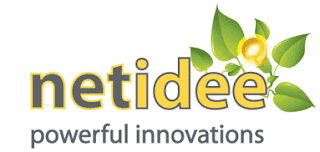This blog will document my work on my PhD thesis on a communication stack and integration middleware for the Internet of Things which is supported by a scholarship of the Internet Foundation Austria within the netidee 2013 programme. Resulting open source code will be published within the IoTSyS open source project using the BSD 3 clause license.
A communication stack and integration middleware for the Internet of Things
The successful realization of smart grids or smart cities requires the integration and interconnection of buildings, being responsible for about 23% of the world-wide electricity consumption. Interoperability is a key challenge, since state of the art building automation systems are not compatible with each other and not designed to scale for a such large scale systems. The use of IP communcation can be a key enabler to this problem having smart grids and smart cities as first applications of an Internet of Things. The focus of this thesis is the design of a novel system protocol stack for the Internet of Things that should mainly rely on open Internet and Web protocols. Furthermore, an integration concept for existing building automation system should be created and the proposed system should be evaluated regarding security, privacy and scalability implications.
State of the Art
Research towards the use of IP communication and Web technologies for building automation systems focuses typically only on a certain layer of the communication stack and came up with protocols like 6LoWPAN or ZigBee/IP. However, the use of IPv6 only provides a common network layer. The transport and application layers are left out of scope. Current research proposes to apply state of the art Web service technologies to provide interoperable message exchange protocols. Due to the high resource demands several optimizations are required which resulted in the standardization of the Constrained Application Protocol and Efficient XML Interchange. However, the recent research results do not provide a holistic systems stack and the application layer semantics and information models are missing. The large scale interconnection leads further to scalability problems and interconnection of homes and buildings to strong privacy concerns which are still a hot research topic.
Aims of the thesis
- To design a holistic system stack and integration middleware for the Internet of Things.
- The system stack should be based as much as possible on existing Internet and Web technologies but optimized to be deployable on constrained sensor and actuator nodes operating with limited resources (memory, CPU, bandwith).
- For the creation of the stack the requirements and communication features of existing building automation system technologies should be analyzed in order to be applicable in the building automation domain.
- Further an integration concept and integration middleware should be designed relevant state of the art technologies (KNX, BACnet, W-MBus). v) Strong access control and authorization mechanisms should be an integral part of the system stack. Privacy concers could be a strong inhibitor for the success of the Internet of Things.
- The system limits regarding scalability of the system should be analyzed by means of analytic methods and protocol simulation.
